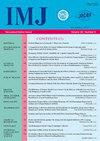CLINICAL CHARACTERISTICS OF PATIENTS WITH CHRONIC HEART FAILURE AND TYPE 2 DIABETES MELLITUS WHO REQUIRE IMPLANTATION OF PERMANENT PACEMAKER
Q4 Medicine
引用次数: 0
Abstract
In recent decades, there has been a rise of chronic heart failure mortality. Among the huge range of modern methods of this pathology treatment, the cardioresynchronizing therapy stands out, it allows the improvement of the patient's heart function, reduces clinical signs of the disease, improves well−being, as well as diminishes morbidity and mortality. The use of this method in the patients with a comorbid pathology, i.e. in those with chronic heart failure and type 2 diabetes, deserves a special attention. In order to determine the clinical characteristics of the patients who required a pacemaker implantation, we examined 203 patients who had reasonable indications for this in accordance with the ACC / ANA and ESC current recommendations. Another important criterion for inclusion into the group of implantation was considered to be the presence of comorbid Diabetes mellitus type 2. The gender and age characteristics of the surveyed population were dominated by elderly male patients. The presence of concomitant cardiovascular pathology depending on the age of patients was analyzed, which showed mostly hypertension of stage 2−3, a constant atrial fibrillation. In structure of comorbid pathology the somatic diseases, including type 2 Diabetes mellitus prevailed. Electrostimulators were implanted into the examined cohort of patients, among which 132 devices worked in DDD mode, 71 of the installed stimulators had the DDDR mode. The research results concluded that the implantation of a pacemaker became a necessary procedure for elderly patients, mostly men, with a high prevalence of cardiovascular (coronary heart disease, hypertension, persistent atrial fibrillation) and somatic pathology in the form of type 2 Diabetes mellitus. Key words: chronic heart failure, type 2 diabetes mellitus, pacemaker implantation, clinical features, gender and age characteristics.需要植入永久性封堵器的世界卫生组织和2型糖尿病患者的临床特点
近几十年来,慢性心力衰竭死亡率呈上升趋势。在这种病理学治疗的众多现代方法中,心脏再同步治疗脱颖而出,它可以改善患者的心脏功能,减少疾病的临床症状,改善健康状况,降低发病率和死亡率。这种方法在患有合并症的患者中的使用,即在患有慢性心力衰竭和2型糖尿病的患者中,值得特别注意。为了确定需要植入起搏器的患者的临床特征,我们根据ACC/ANA和ESC目前的建议,对203名有合理适应症的患者进行了检查。纳入植入组的另一个重要标准被认为是是否存在2型糖尿病合并症。调查人群的性别和年龄特征主要是老年男性患者。根据患者年龄的不同,分析了伴随心血管病理的存在,主要表现为2-3期高血压,即持续性心房颤动。在共病病理结构中,包括2型糖尿病在内的躯体疾病占主导地位。在接受检查的患者队列中植入了电刺激器,其中132个设备以DDD模式工作,71个安装的刺激器具有DDDR模式。研究结果表明,植入起搏器成为老年患者的必要程序,这些患者大多是男性,心血管疾病(冠心病、高血压、持续性心房颤动)和2型糖尿病形式的躯体病理患病率较高。关键词:慢性心力衰竭,2型糖尿病,起搏器植入,临床特征,性别和年龄特征。
本文章由计算机程序翻译,如有差异,请以英文原文为准。
求助全文
约1分钟内获得全文
求助全文
来源期刊

International Medical Journal
医学-医学:内科
自引率
0.00%
发文量
21
审稿时长
4-8 weeks
期刊介绍:
The International Medical Journal is intended to provide a multidisciplinary forum for the exchange of ideas and information among professionals concerned with medicine and related disciplines in the world. It is recognized that many other disciplines have an important contribution to make in furthering knowledge of the physical life and mental life and the Editors welcome relevant contributions from them.
The Editors and Publishers wish to encourage a dialogue among the experts from different countries whose diverse cultures afford interesting and challenging alternatives to existing theories and practices. Priority will therefore be given to articles which are oriented to an international perspective. The journal will publish reviews of high quality on contemporary issues, significant clinical studies, and conceptual contributions, as well as serve in the rapid dissemination of important and relevant research findings.
The International Medical Journal (IMJ) was first established in 1994.
 求助内容:
求助内容: 应助结果提醒方式:
应助结果提醒方式:


